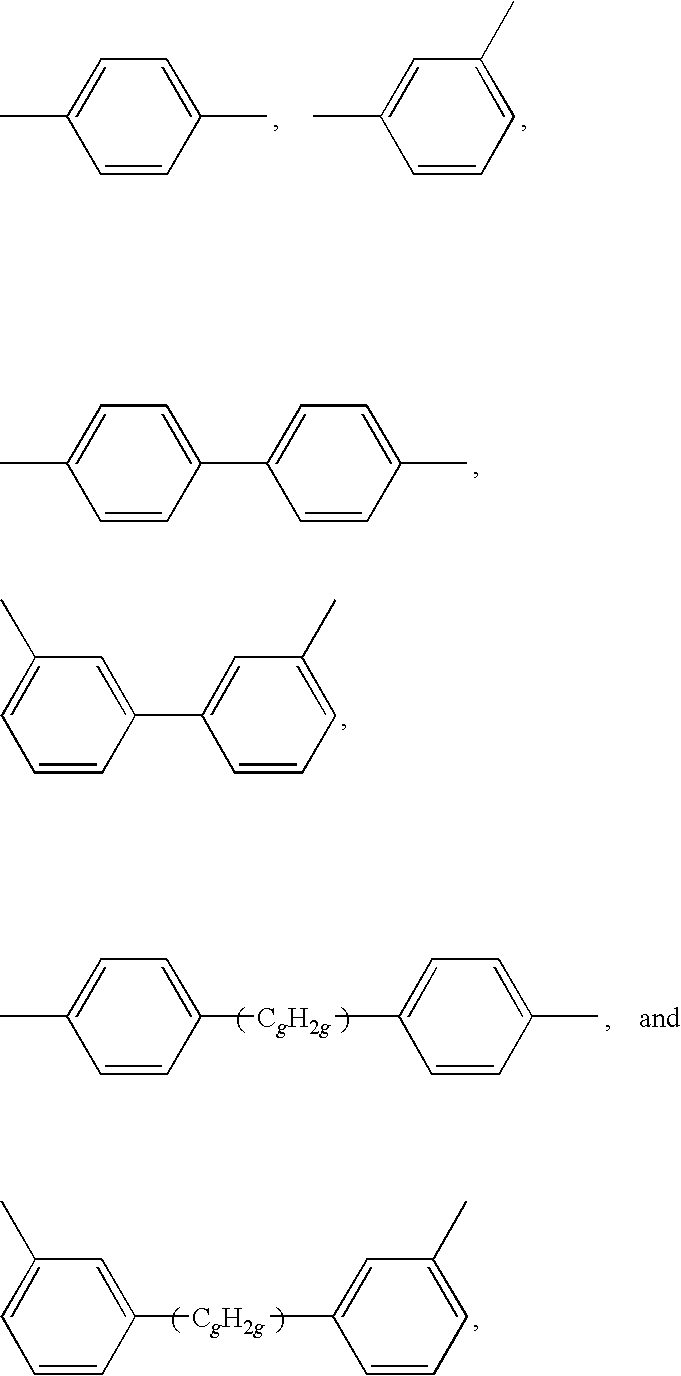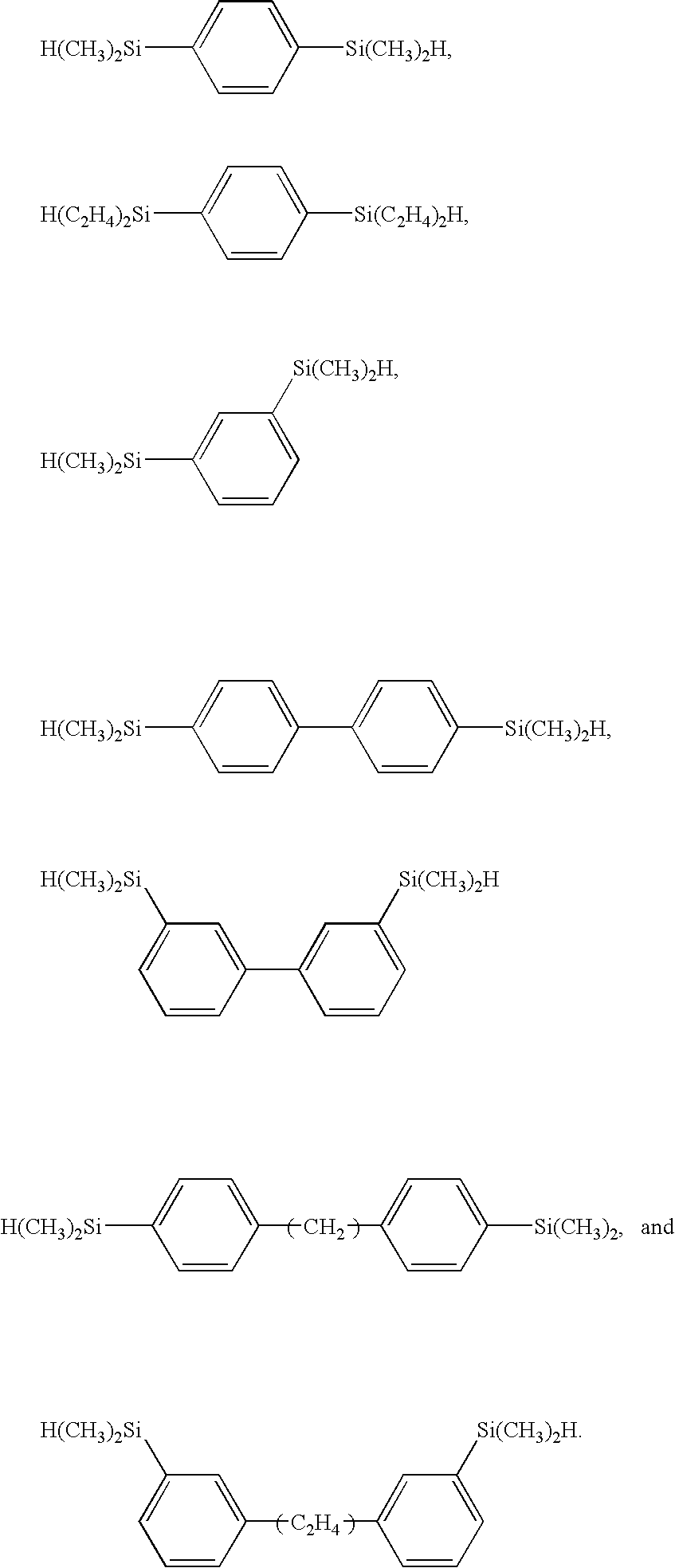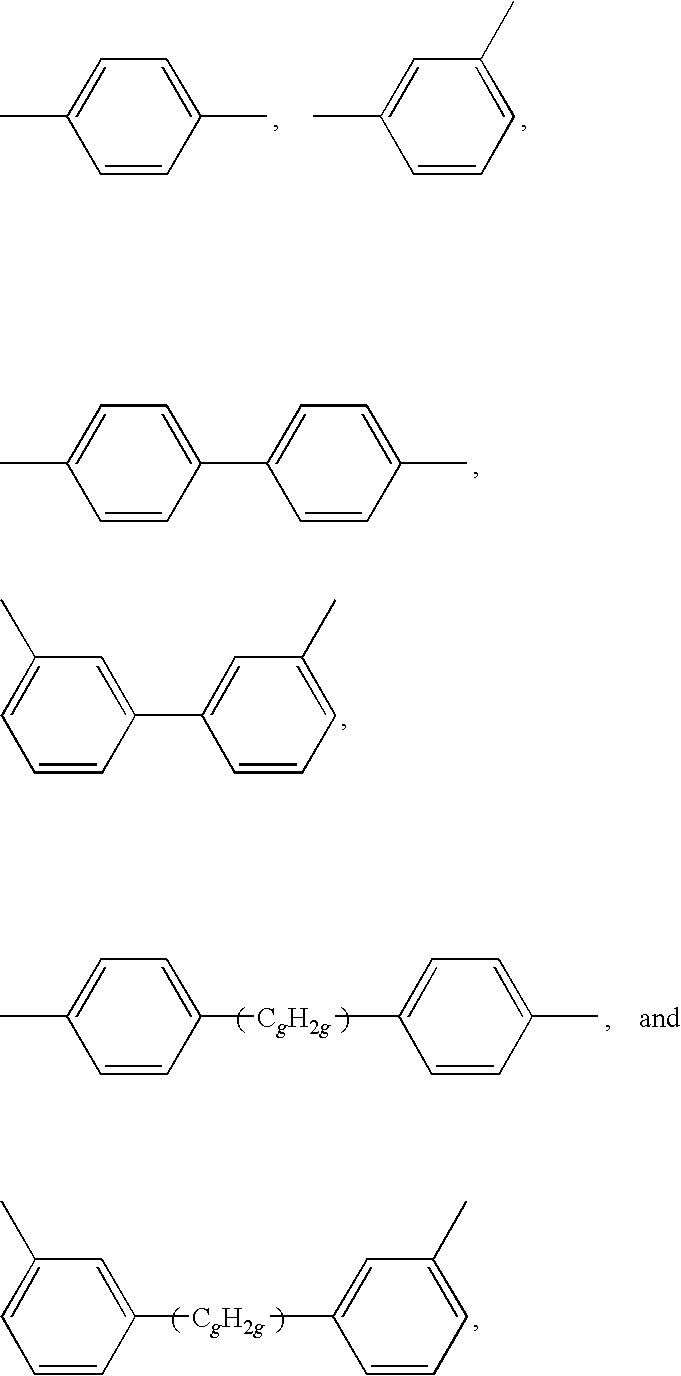Silicone Resin Film and Method of Preparing Same
a silicone resin and film technology, applied in the field of silicone resin film preparation, can solve the problems of limited utility of free standing silicone resin film, and achieve the effects of low thermal expansion coefficient, high modulus, and high tensile strength
- Summary
- Abstract
- Description
- Claims
- Application Information
AI Technical Summary
Benefits of technology
Problems solved by technology
Method used
Image
Examples
example 1
[0119]Silicone Resin A (274 g), 502 g of Silicone Resin B, and 156 g of toluene were mixed thoroughly. The mixture was heated at 90-100° C. under reduced pressure to remove most of the toluene. The vacuum was discontinued and 127 g of 1,4-Bis(dimethylsilyl)-benzene was added to the mixture. The pressure was reduced to 2 kPa and the temperature was maintained at 90° C. for 30 min. The vacuum was again discontinued and 1,4-bis(dimethylsilyl)benzene was added in an amount sufficient to restore the mole ratio SiH / Vi to 1:1.
[0120]The preceding silicone mixture (80 g), 20 g of Hydral® 710, and 0.08 g of triphenylphosphine were mixed manually using a spatula. The components were further mixed for ten consecutive 30-second cycles using a Mikrona dental mixer. The resulting mixture was treated with Platinum Catalyst in an amount sufficient to achieve a concentration of 2 ppm of platinum. The components were then mixed for two consecutive 30-second cycles using the dental mixer. The silicone ...
example 2
[0121]Silicone Resin A (57.9 g), 12.1 g of 1,4-bis(dimethylsilyl)benzene, 0.07 g of triphenylphosphine, and 30 g of Hydral® 710 were mixed manually using a spatula. The components were further mixed for ten consecutive 30-second cycles using a Mikrona dental mixer. The resulting mixture was treated with Platinum Catalyst in an amount sufficient to achieve a concentration of 2 ppm of platinum. The components were then mixed for two consecutive 30-second cycles using the dental mixer. A silicone resin film was prepared using this silicone composition and the method of Example 1. The heat release properties of the silicone resin film are shown in Table. 1.
example 3
[0122]Silicone Resin A (49.6 g), 10.4 g of 1,4-bis(dimethylsilyl)benzene, 0.06 g of triphenylphosphine, and 40 g of Hydral® 710 were mixed manually using a spatula. The components were further mixed for ten consecutive 30-second cycles using a Mikrona dental mixer. The resulting mixture was treated with Platinum Catalyst in an amount sufficient to achieve a concentration of 2 ppm of platinum. The components were then mixed for two consecutive 30-second cycles using the dental mixer. A silicone resin film was prepared using this silicone composition and the method of Example 1. The heat release properties of the silicone resin film are shown in Table. 1.
PUM
| Property | Measurement | Unit |
|---|---|---|
| thickness | aaaaa | aaaaa |
| thickness | aaaaa | aaaaa |
| mol % | aaaaa | aaaaa |
Abstract
Description
Claims
Application Information
 Login to View More
Login to View More - R&D
- Intellectual Property
- Life Sciences
- Materials
- Tech Scout
- Unparalleled Data Quality
- Higher Quality Content
- 60% Fewer Hallucinations
Browse by: Latest US Patents, China's latest patents, Technical Efficacy Thesaurus, Application Domain, Technology Topic, Popular Technical Reports.
© 2025 PatSnap. All rights reserved.Legal|Privacy policy|Modern Slavery Act Transparency Statement|Sitemap|About US| Contact US: help@patsnap.com



